If you’re wondering “are bell tents warm at night?” — the short answer is yes, with the right setup. The fabric you choose, how you insulate the space, and how you manage condensation all play a big role in staying warm and comfortable.
In this guide, we’ll show you exactly how to keep cosy in your bell tent — whether you’re off to a festival, heading to a family campsite, or planning a back-to-nature winter escape.
What Makes a Bell Tent Warm (or Not)?
1. Fabric Type: The #1 Factor
Your tent’s fabric has the biggest impact on how warm it feels overnight:
|
Fabric |
Warmth |
Breathability |
Stove Use |
Weight |
|---|---|---|---|---|
|
Oxford Ultralight (100gsm) |
Coolest |
Low |
❌ No |
Lightest |
|
Polycotton (~200gsm) |
Warm & Balanced |
Medium |
✅ Yes (needs flashing) |
Medium |
|
Pure Cotton (285gsm) |
Warmest |
High |
✅ Yes (needs flashing) |
Heavier |
|
Fire Cotton (285gsm, FR) |
Warmest + Stove-ready |
High |
✅ Built-in stove flap |
Heavier |
-
Oxford Ultralight (Polyester): Lightweight, waterproof, but not breathable — tends to feel chilly.
-
Polycotton: A great middle-ground — breathable and holds warmth better than polyester.
-
Pure Cotton: Natural and very breathable — excellent at regulating warmth and moisture.
-
Fire Cotton: All the benefits of cotton plus fire treatment and a built-in stove flap — perfect for cold-weather camping.
🔥 Important: Only cotton tents (Pure or Fire Cotton) are suitable for stove use.
Fire Cotton is ready to go — Pure Cotton needs a flashing kit. Once the fabric is cut, we can’t accept returns.
2. Tent Size & Air Volume
Smaller tents heat up more quickly (less air to warm), but they’re also more compact. A 3m bell tent is ideal for solo campers or light packers.
A 4m bell tent takes a little longer to heat, but it holds warmth better once warmed — and gives you space for rugs, inner tents, and even a stove (if you’ve got the right fabric).
Need help choosing? Our size guide shows real-world layouts to help you decide.
3. Your Pitch Location
Where you pitch your tent has a big impact on overnight warmth:
-
Exposed hillsides = cold wind and heat loss
-
Damp ground = faster cooling
-
Sheltered, level ground = warmer, more stable temperatures
Also: make sure your pitch is tight and taut. Loose guy ropes or saggy canvas let cold air in.
4. Ground Insulation (Don’t Skip This!)
Most of your body heat escapes downwards into the ground. To stay warm, add:
-
Foam or insulated mats under your bed
-
Rugs or blankets across the groundsheet
-
A groundsheet protector to add a layer of insulation and help keep things clean
5. Managing Condensation
It may sound counter-intuitive, but moisture makes you feel colder. That’s why it’s important to keep your tent ventilated — especially at night.
Crack open a vent or two to allow cross-ventilation. It helps stop condensation build-up and keeps the air drier, so you stay warmer.
Checklist: How to Stay Warm in a Bell Tent at Night
Before bedtime, do the following:
✅ Choose a breathable fabric
Go for cotton or polycotton to help regulate overnight temperatures.
✅ Use an inner tent
It creates a smaller insulated space and helps stop draughts. Shop inner tents →
✅ Insulate the ground
Layer rugs, blankets, and foam mats. Add a groundsheet protector for extra comfort.
✅ Build a warm sleep system
-
Insulated mat (check the R-value)
-
3- or 4-season sleeping bag
-
Add a fleece liner or hot water bottle
✅ Use heat (safely!)
-
Only with cotton tents
-
Fire Cotton: ready for stove use
-
Pure Cotton: needs a flashing kit
Stove safety musts:
-
Spark arrestor + flue exit
-
CO detector
-
Never leave it unattended
-
Keep all flammables clear
✅ Pitch smart
-
Avoid hollows (cold air sinks)
-
Tension wind-facing guy lines
-
Add a tent cover or awning to reduce heat loss and block early morning light
Fabric Comparison: Warmth at a Glance
|
Fabric |
Warmth Feel |
Breathability |
Stove-Compatible |
Weight |
|---|---|---|---|---|
|
Oxford Ultralight |
❄️ Coolest |
🚫 Low |
❌ No |
🪶 Lightest |
|
Polycotton |
🌤 Balanced |
☁️ Medium |
✅ Yes |
⚖️ Medium |
|
Pure Cotton |
🔥 Warmest |
✅ High |
✅ Yes |
⚖️ Heavier |
|
Fire Cotton |
🔥🔥 Warmest + Stove-ready |
✅ High |
✅ Yes (flap built-in) |
⚖️ Heavier |
Not sure which one’s right for you? Read our full fabric guide.
Cold-Night Mistakes to Avoid (And Quick Fixes)
|
Mistake |
Fix |
|---|---|
|
Closing all vents |
Leave a vent open for airflow |
|
Sleeping straight on the groundsheet |
Use foam mats or rugs |
|
Tent fabric sagging or flapping |
Re-tension guy lines |
|
Wrong tent material |
Use cotton or polycotton for chilly conditions |
More setup tips in our instruction guide.
FAQs
Do I need to spray my new tent to keep it warm or dry?
-
Oxford tents: Fully waterproof from day one.
-
Cotton tents: Need “weathering” — a few wet/dry cycles to seal the fibres.
Can I use an electric heater?
Yes — as long as the tent is ventilated and the heater has tip-over protection.
What’s the best sleeping bag for UK camping?
A 3-season sleeping bag is ideal. For early spring or late autumn, add a fleece liner and a good insulated mat.
Do tent covers actually help?
Yes! A cover works like a jacket — it traps warmth and blocks out early sun.
Can I use a stove in a polyester tent?
No — stoves are only safe in cotton tents.


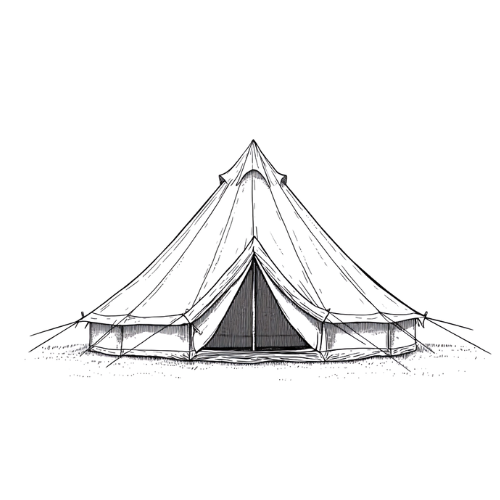 Canvas Bell Tents
Canvas Bell Tents Bell Tent Accessories
Bell Tent Accessories
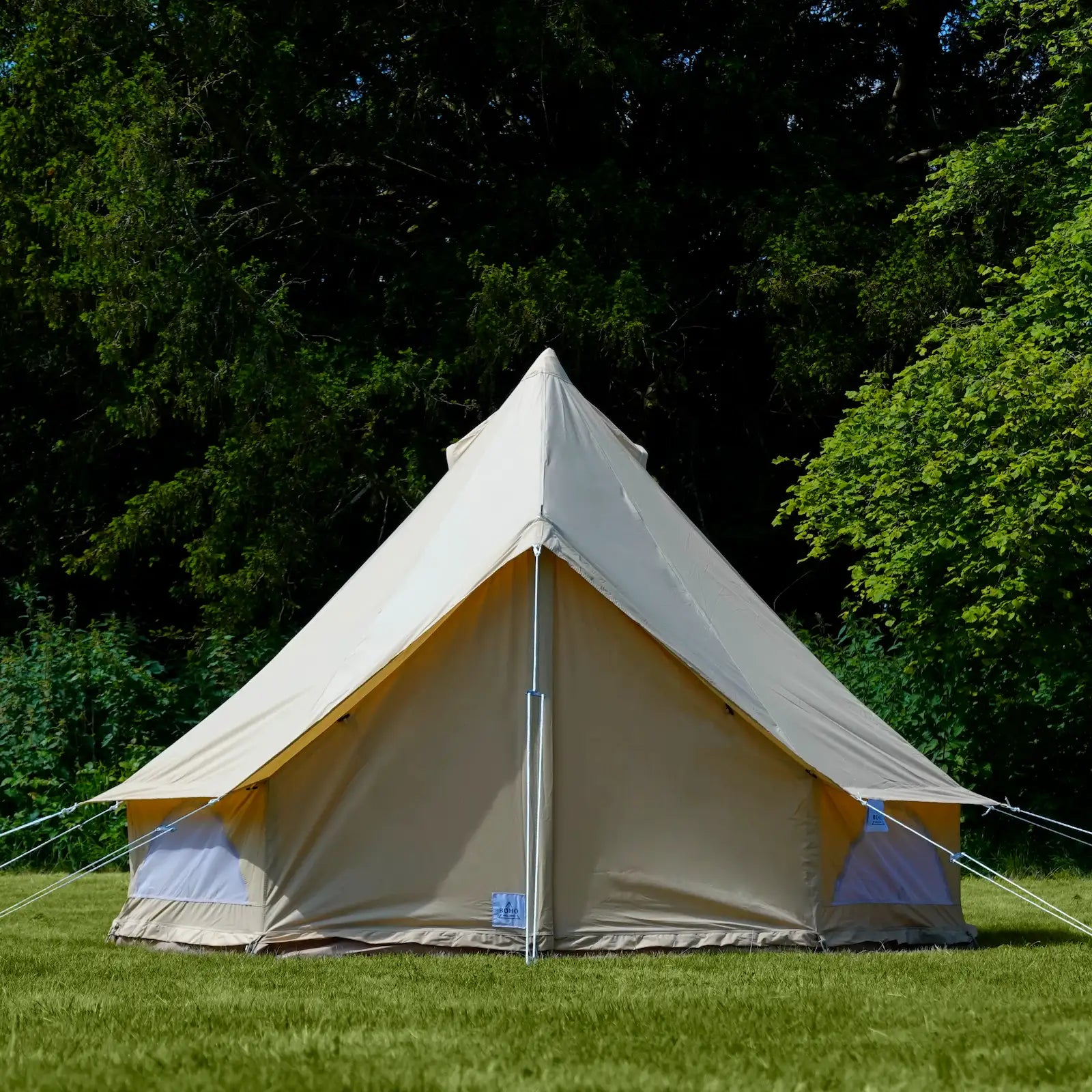

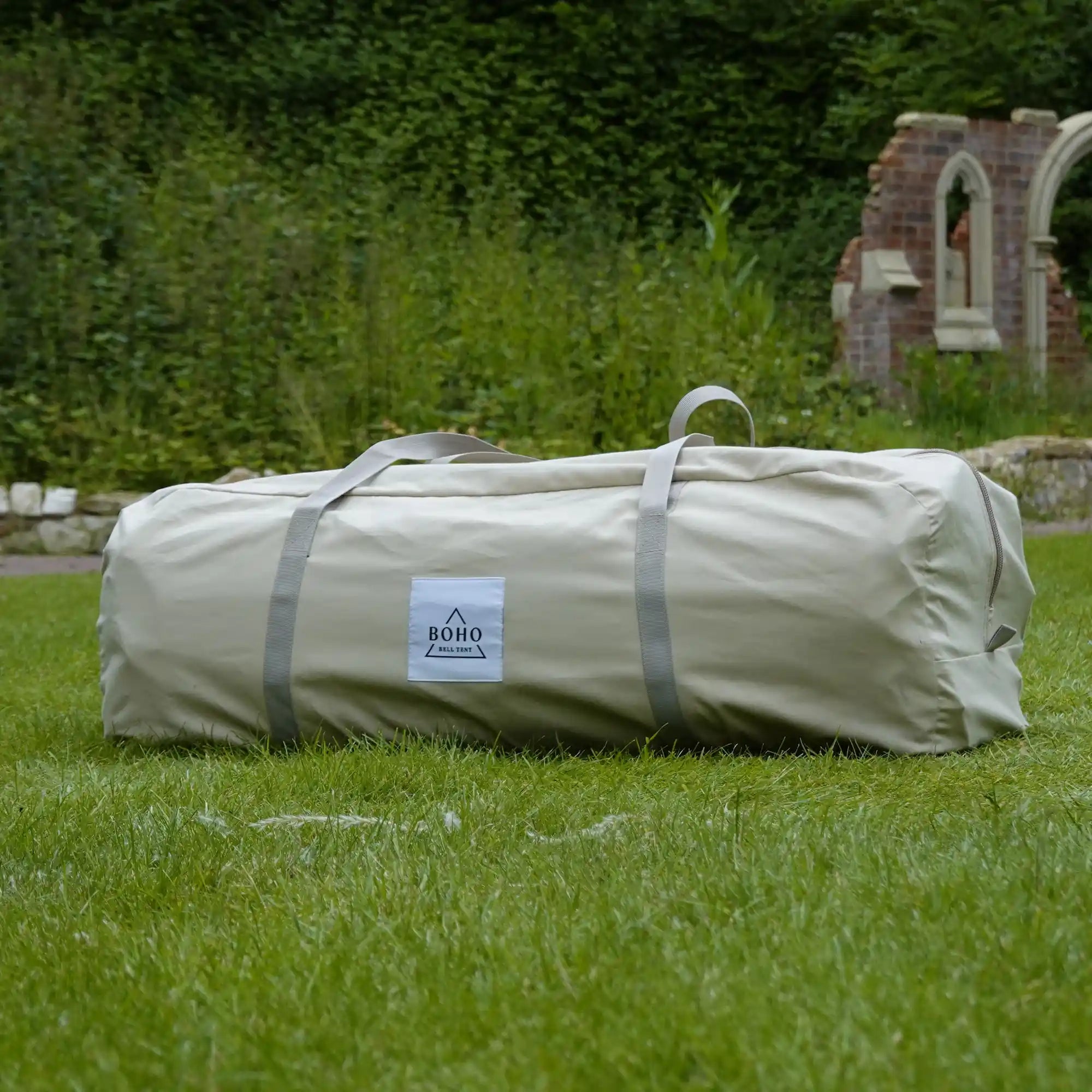
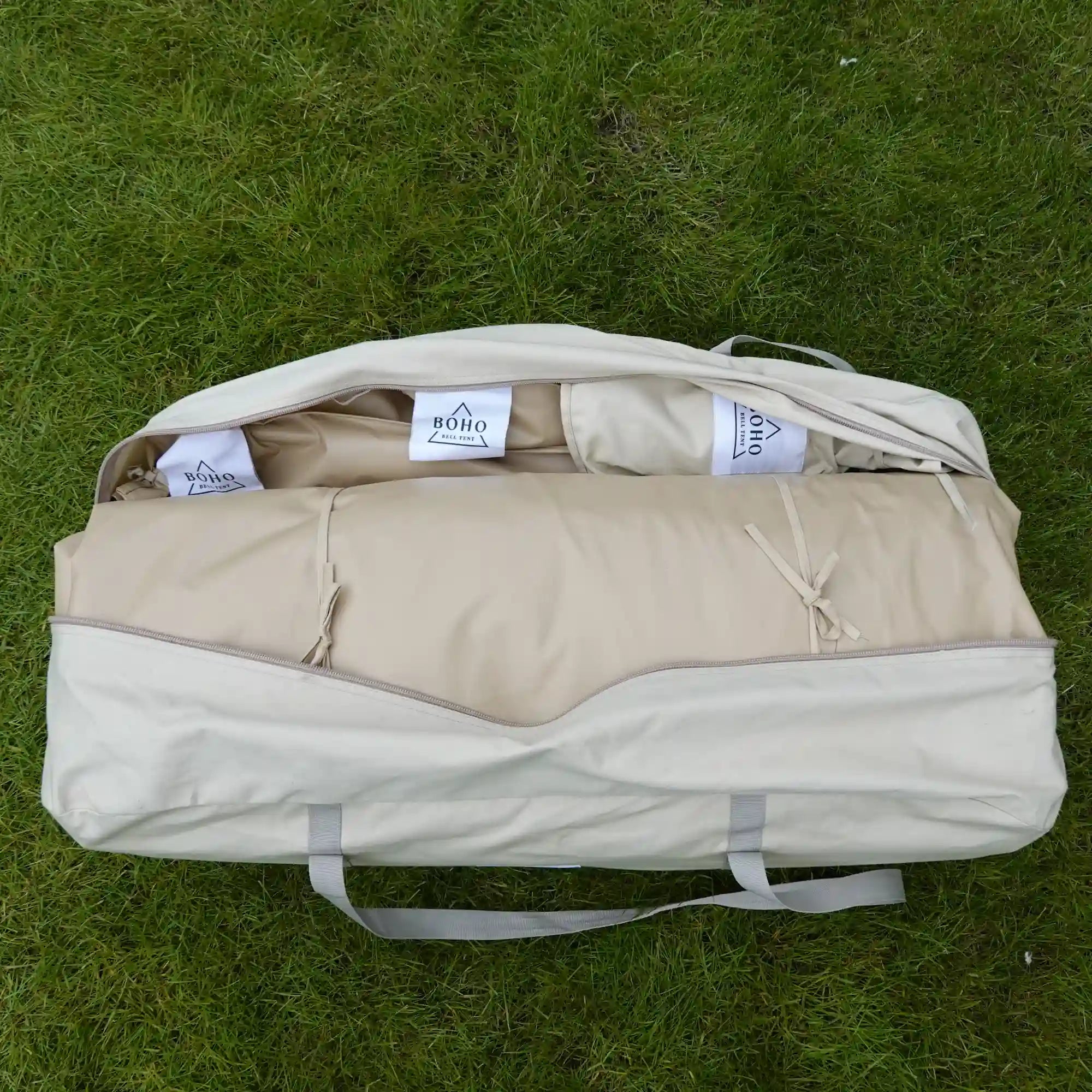
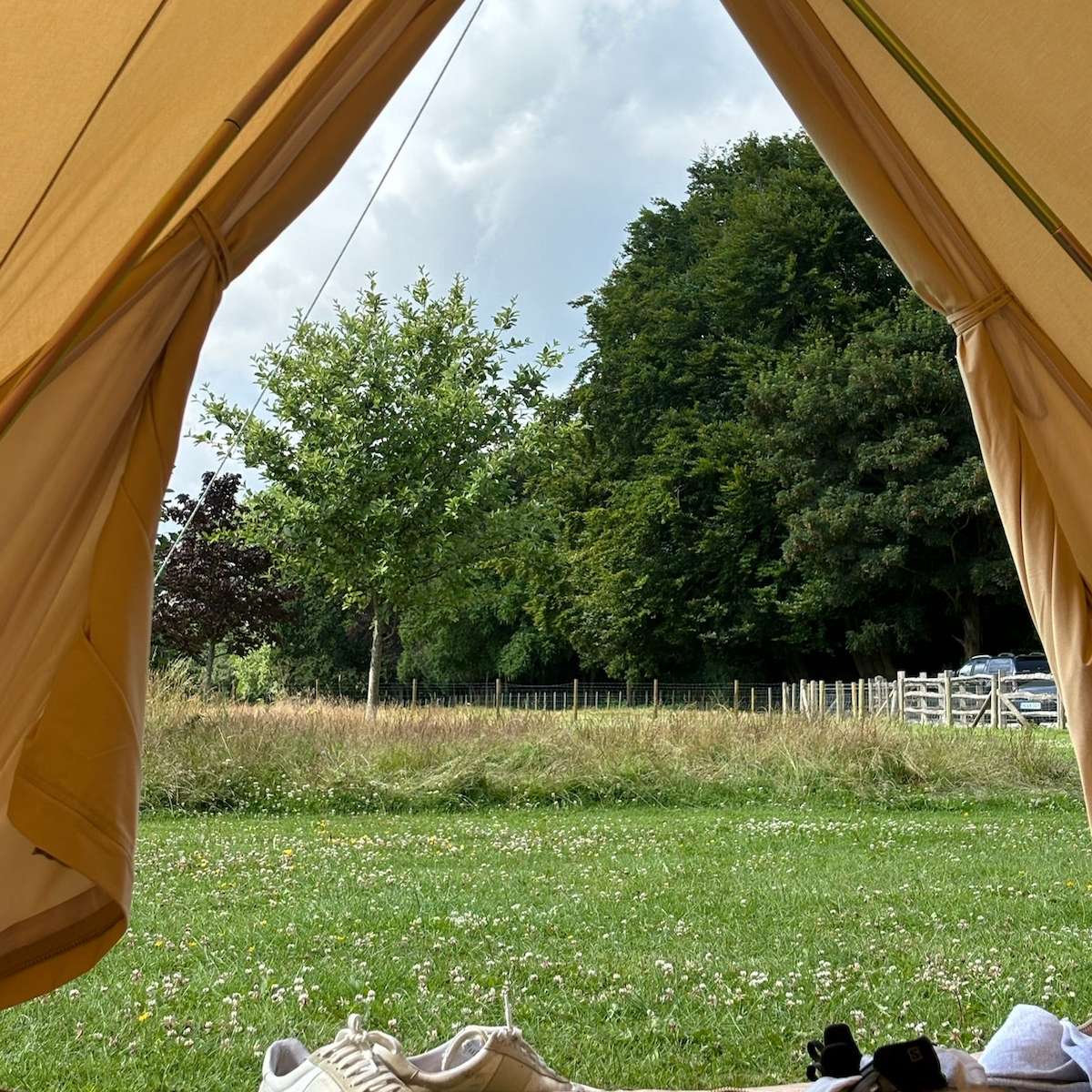
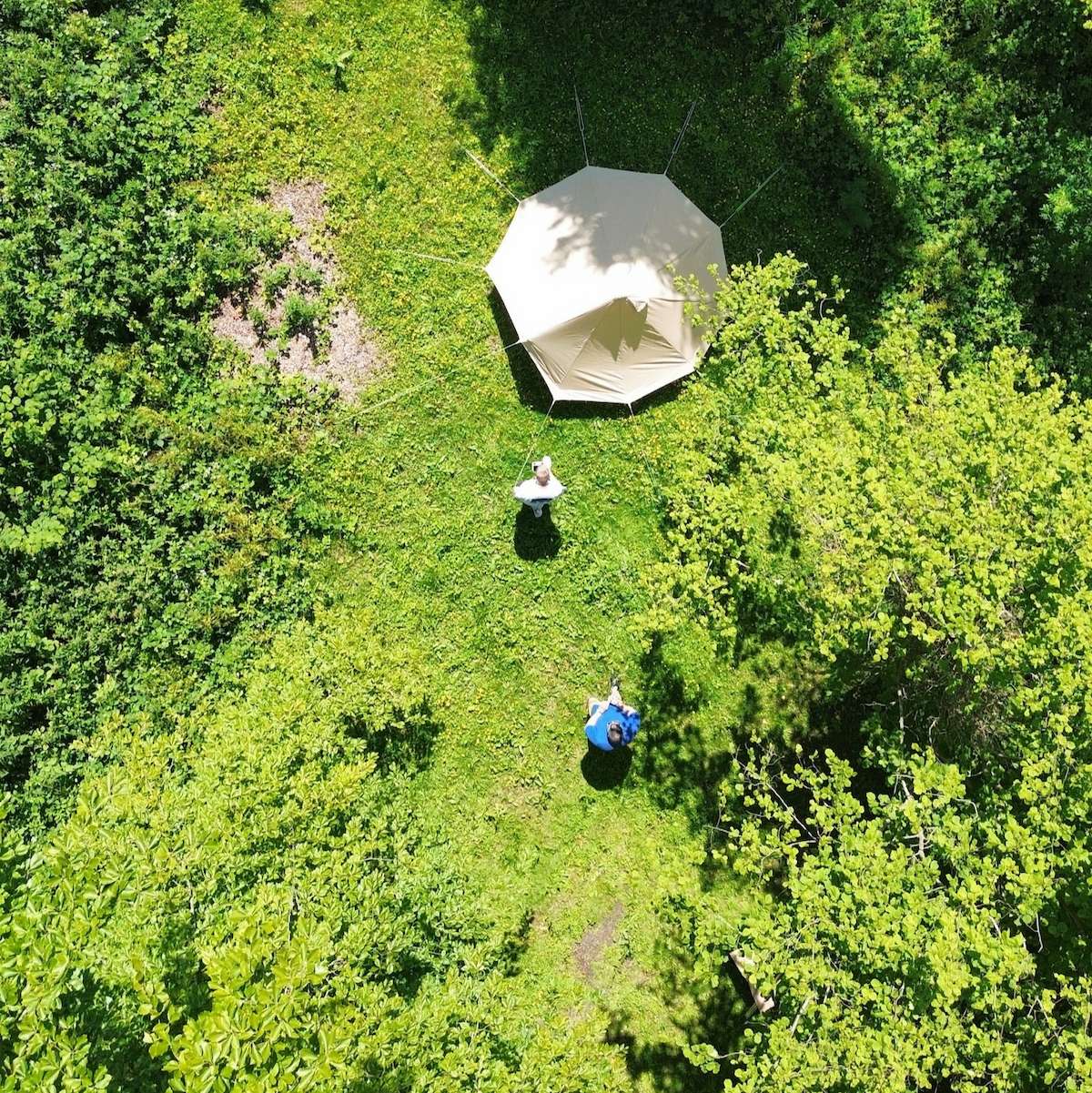

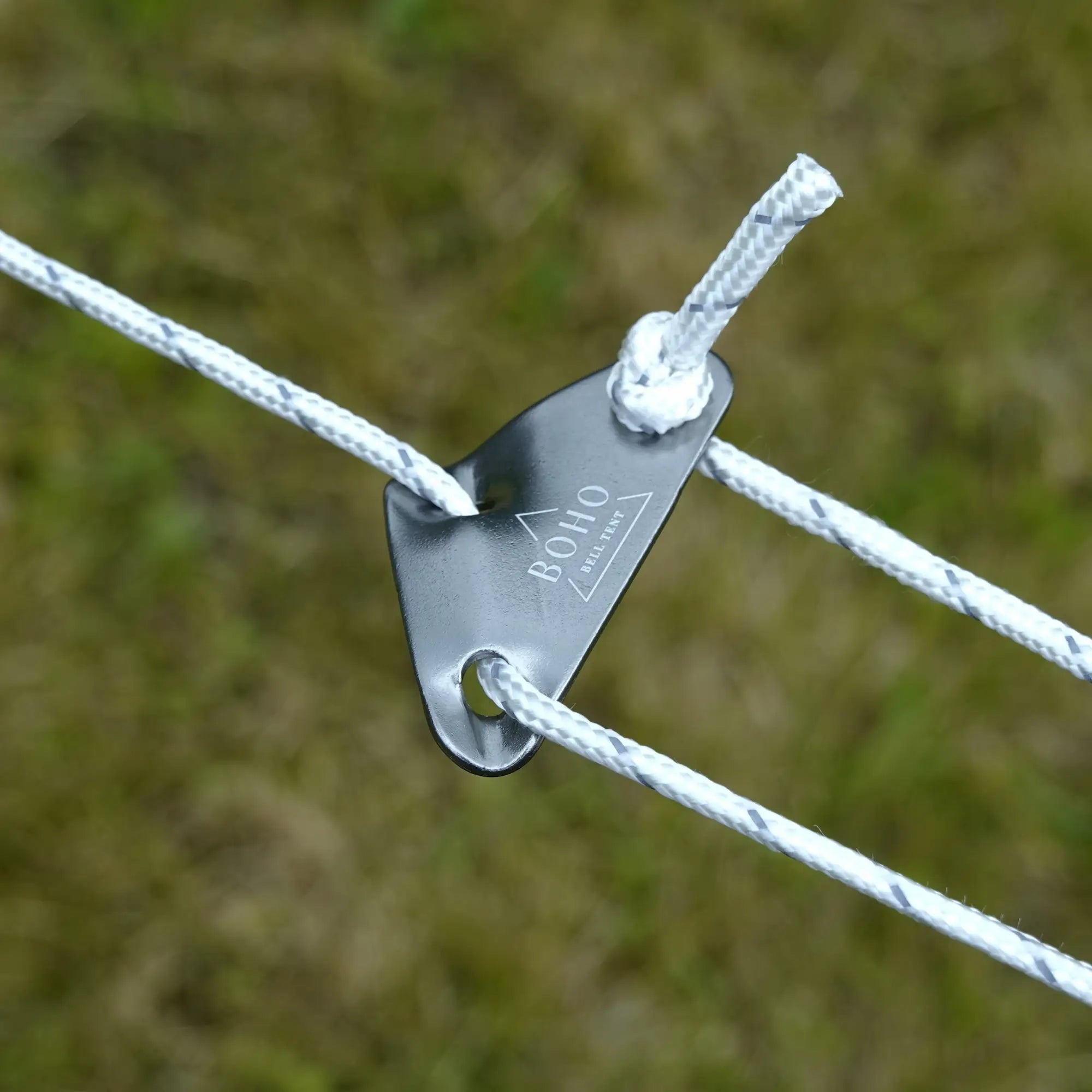
At Boho Bell Tent, we’ve helped hundreds of customers find the perfect setup for festivals, weddings, and off-grid escapes. So if you need any help at all, be sure to reach out!
Share:
Bell Tent Interior Ideas
What’s the Difference Between a Bell Tent and a Tipi?